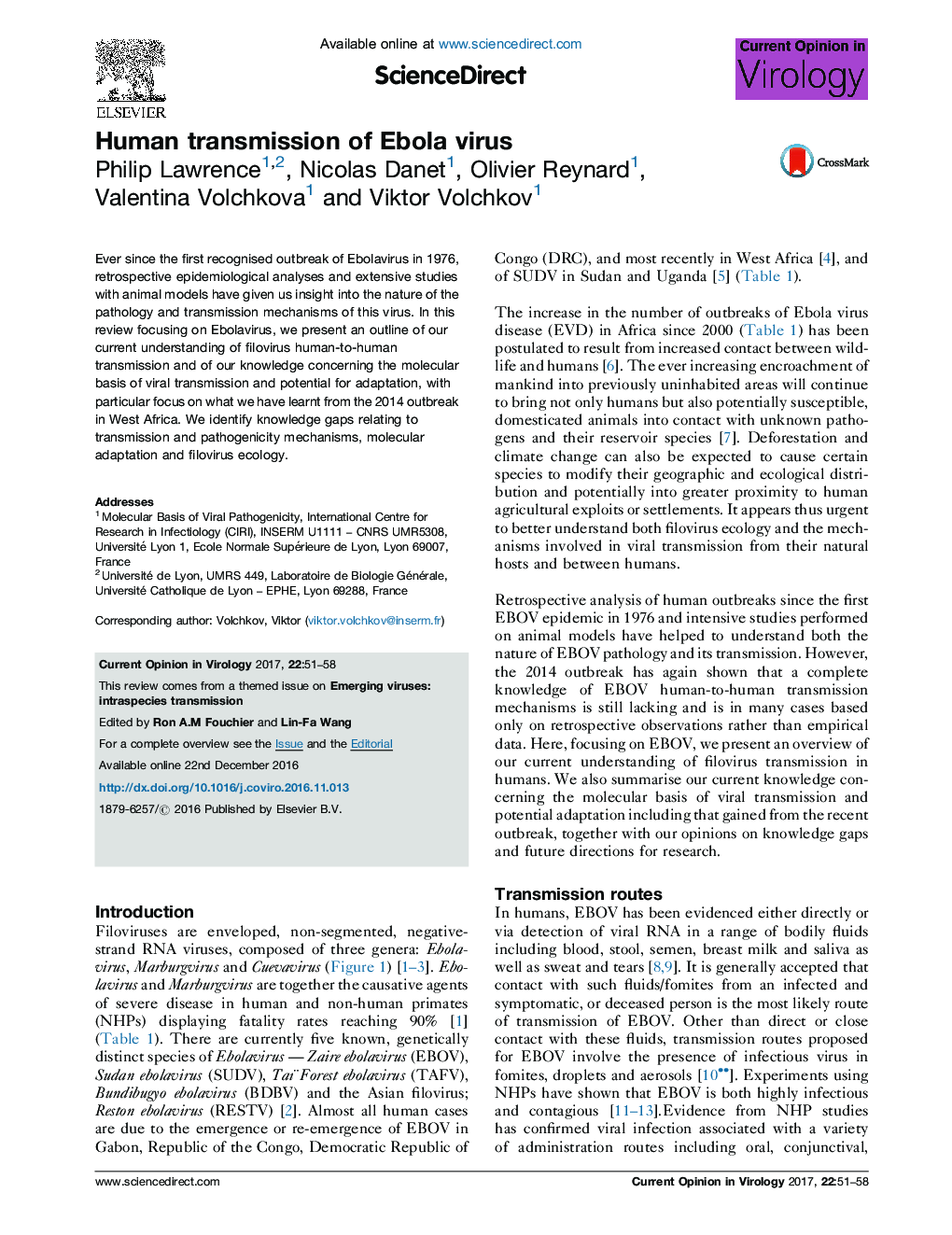| Article ID | Journal | Published Year | Pages | File Type |
|---|---|---|---|---|
| 5546237 | Current Opinion in Virology | 2017 | 8 Pages |
â¢Principal transmission mode of EBOV is through close contact with contaminated fluids.â¢Currently no evidence to suggest aerosol transmission in a natural setting.â¢West African 2014 EBOV Makona strain not evolving faster than previous strains.â¢Evidence of positive selection in several viral genes including GP.â¢Changes linked to viral replication complex and surface glycoprotein expression.
Ever since the first recognised outbreak of Ebolavirus in 1976, retrospective epidemiological analyses and extensive studies with animal models have given us insight into the nature of the pathology and transmission mechanisms of this virus. In this review focusing on Ebolavirus, we present an outline of our current understanding of filovirus human-to-human transmission and of our knowledge concerning the molecular basis of viral transmission and potential for adaptation, with particular focus on what we have learnt from the 2014 outbreak in West Africa. We identify knowledge gaps relating to transmission and pathogenicity mechanisms, molecular adaptation and filovirus ecology.
